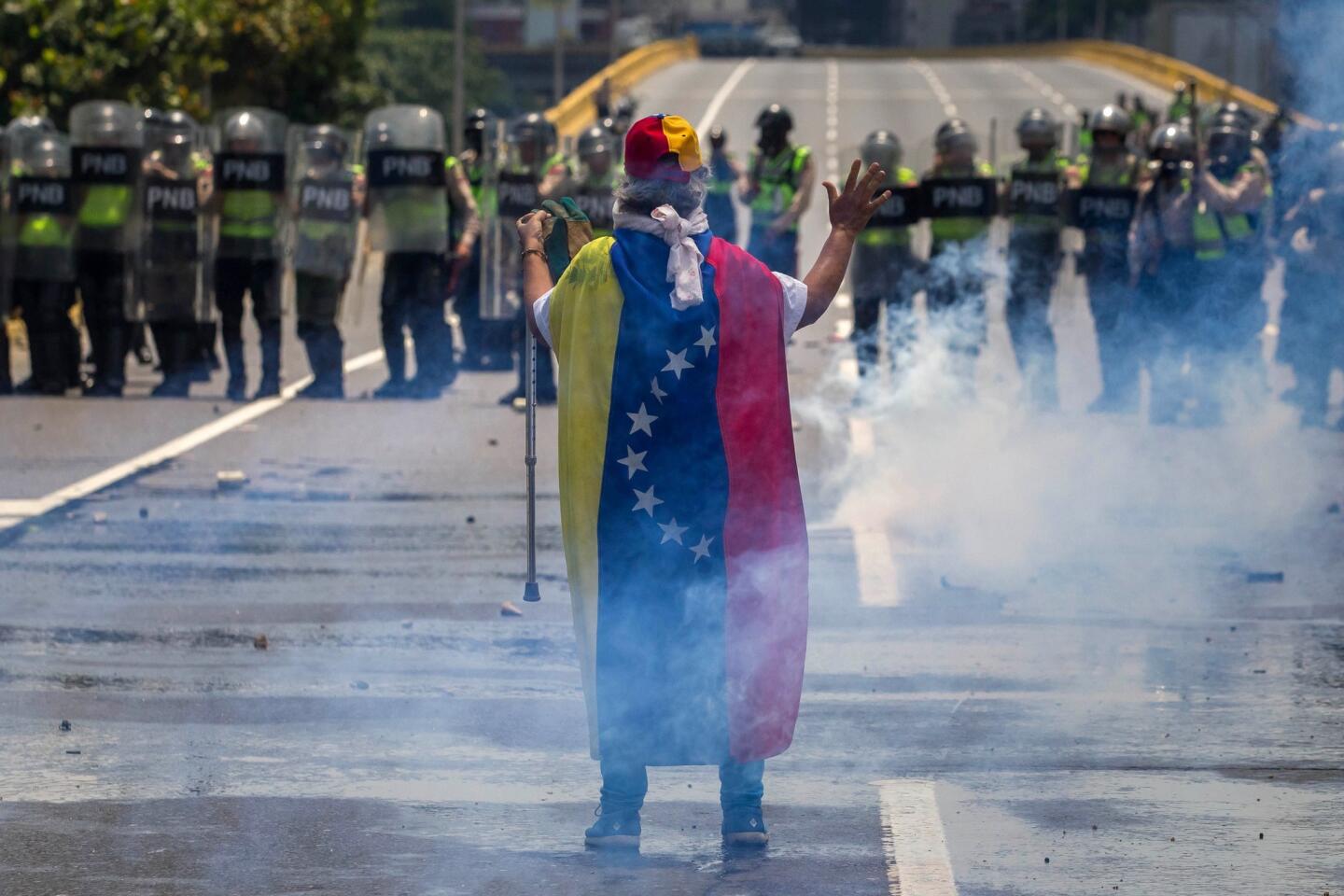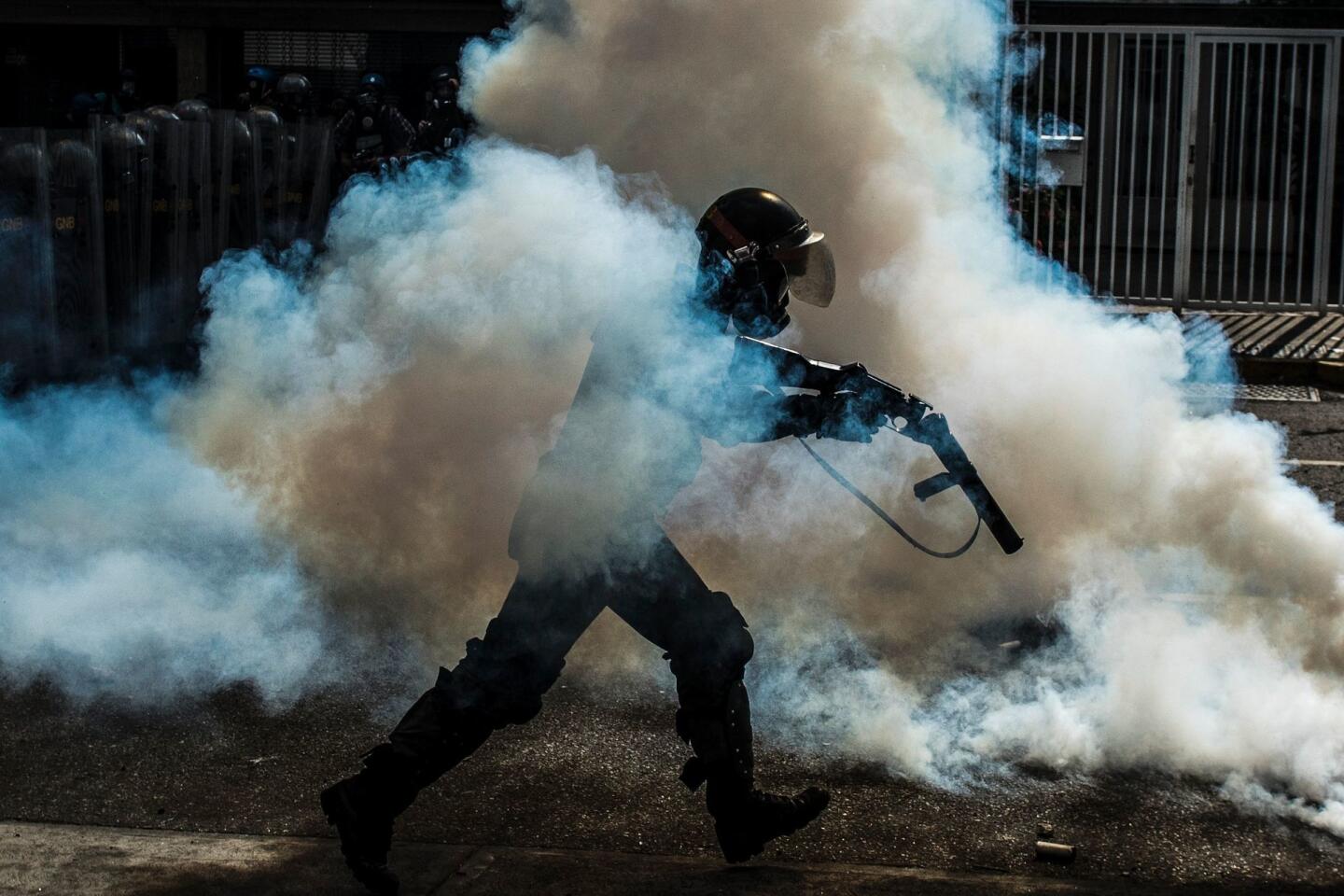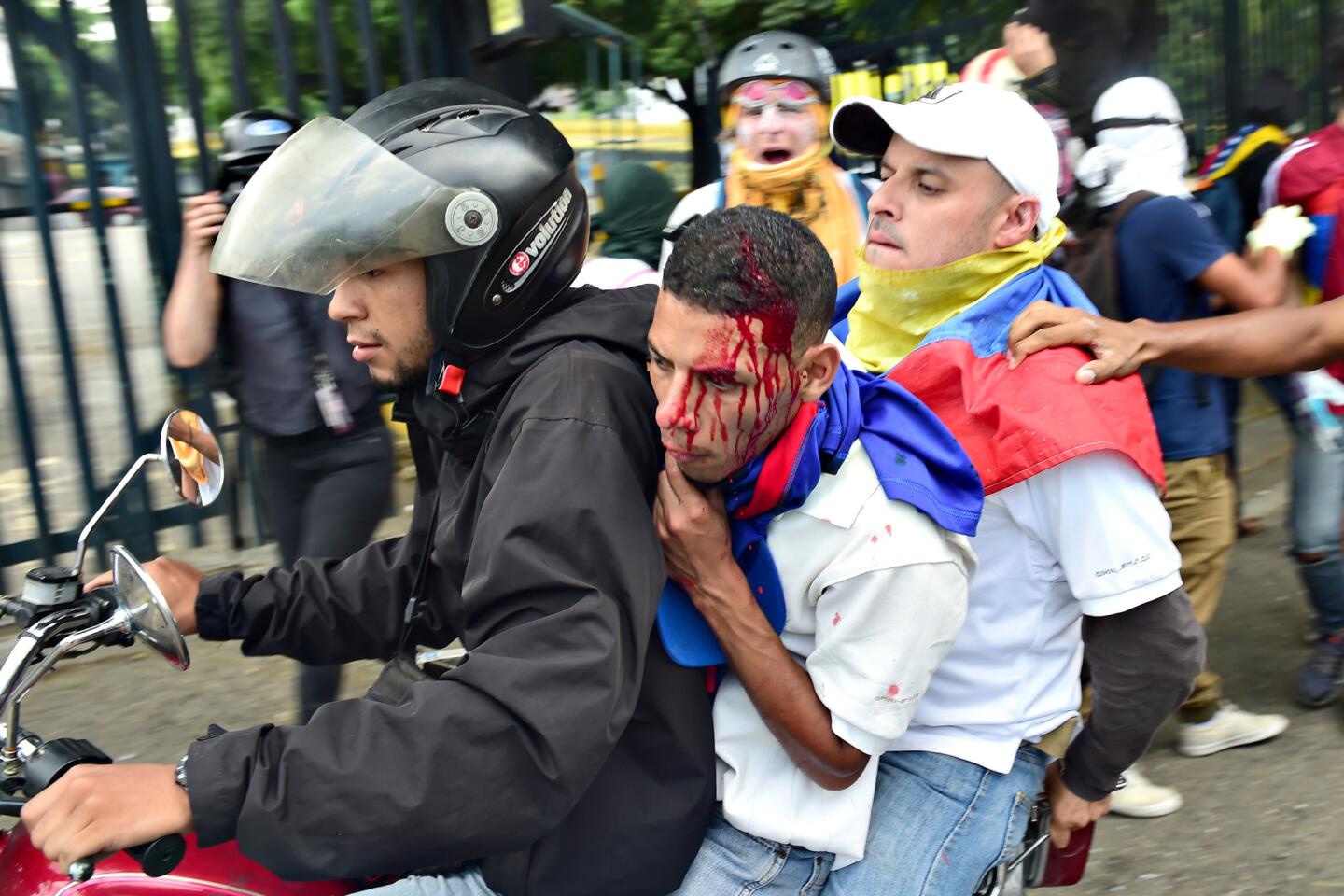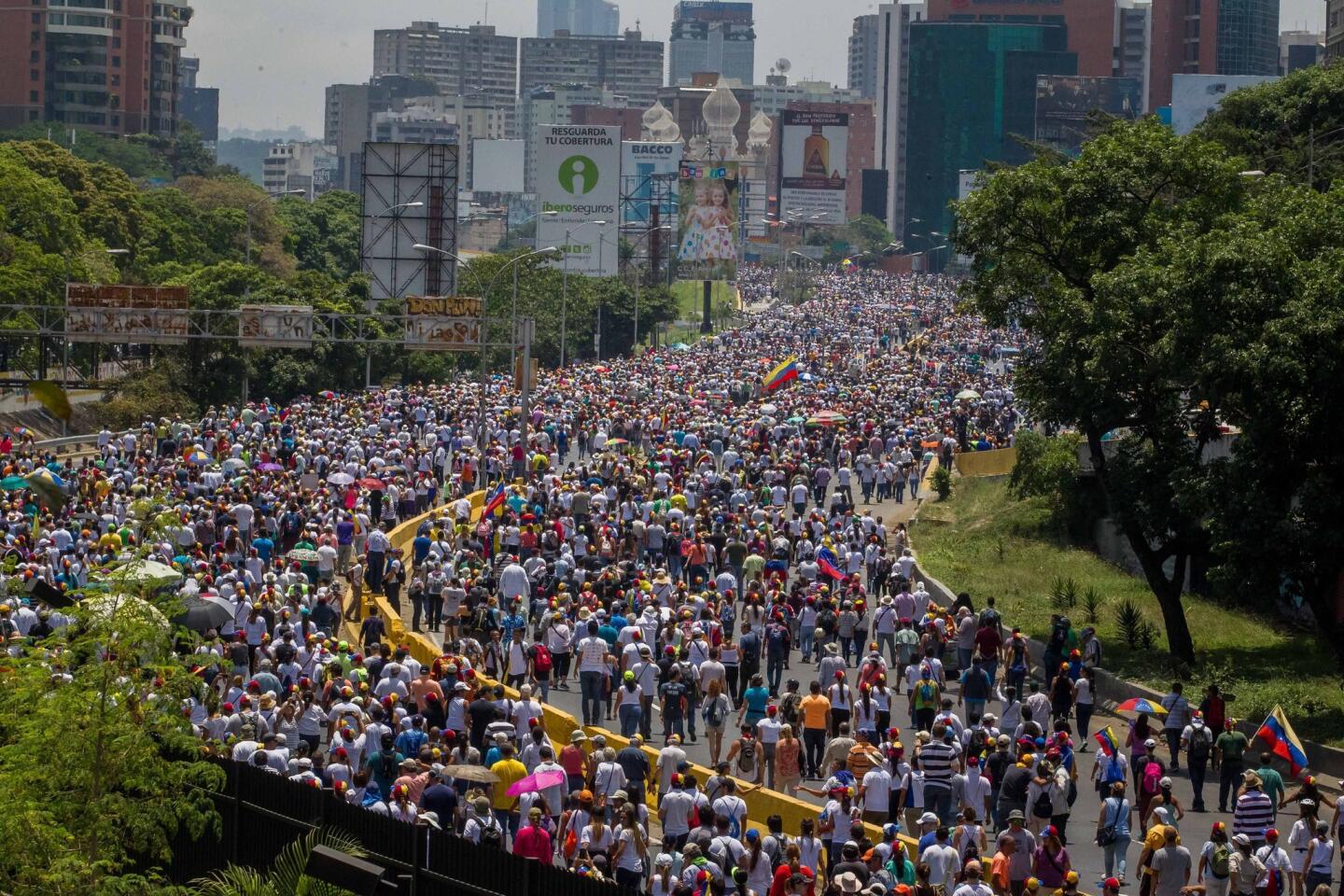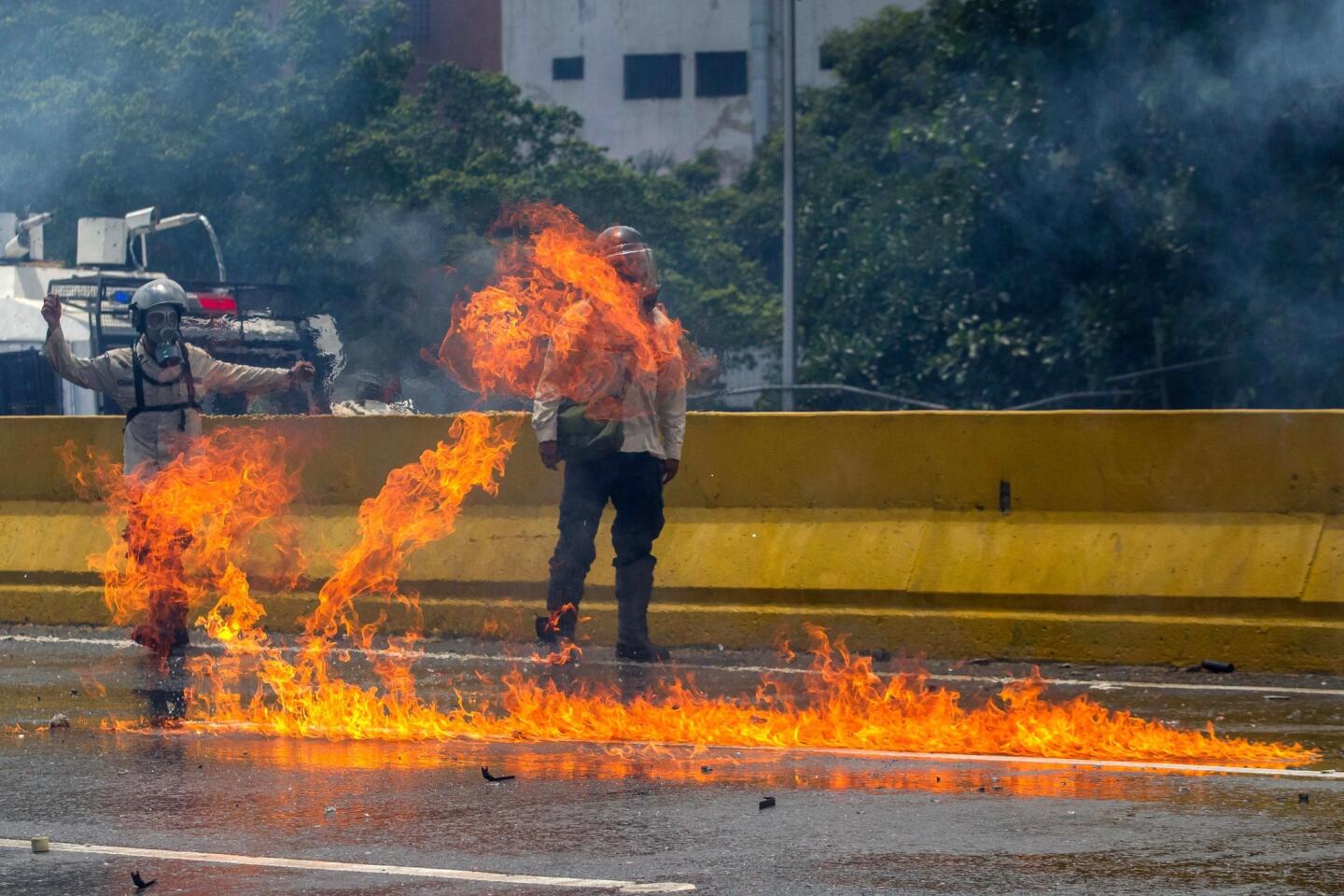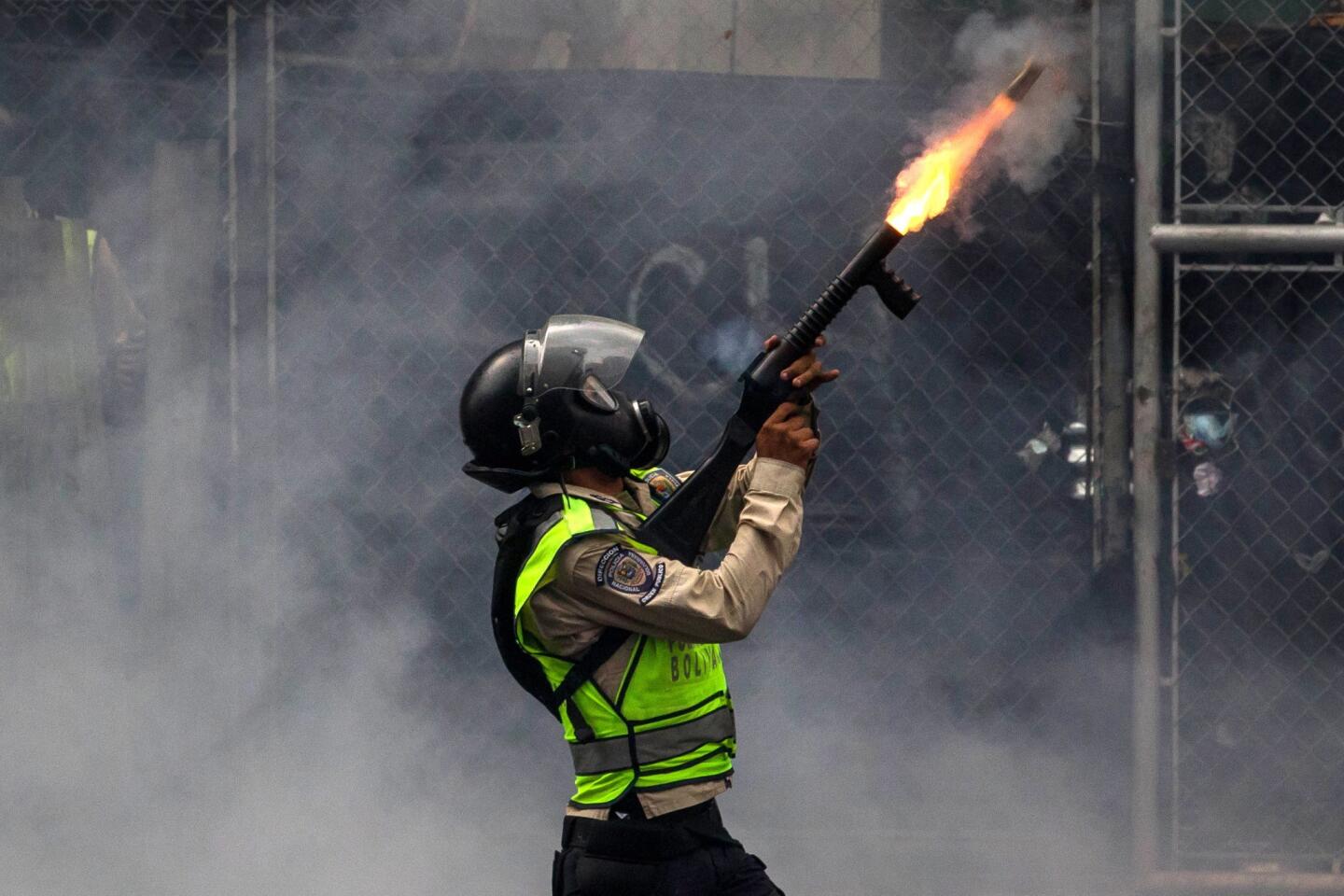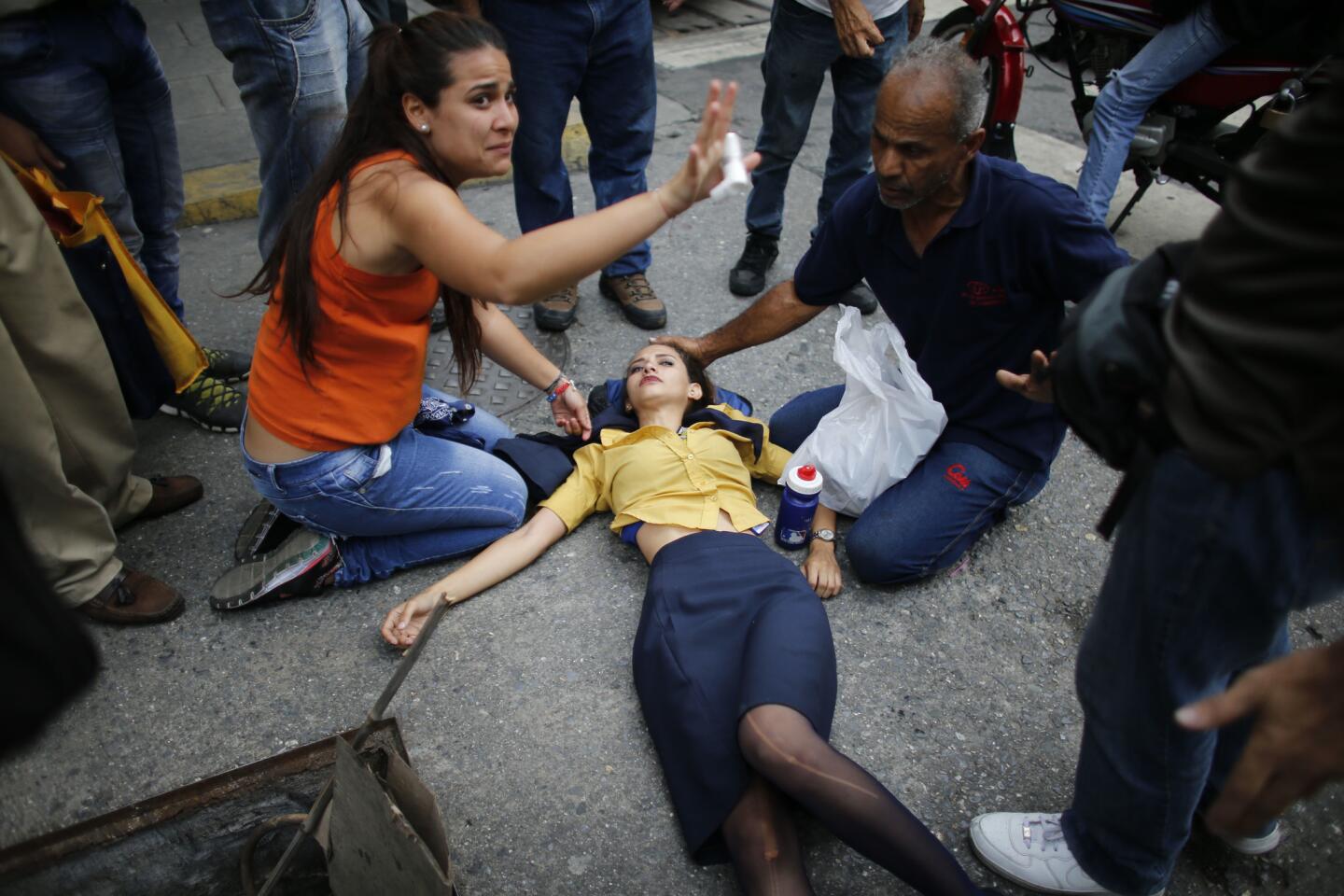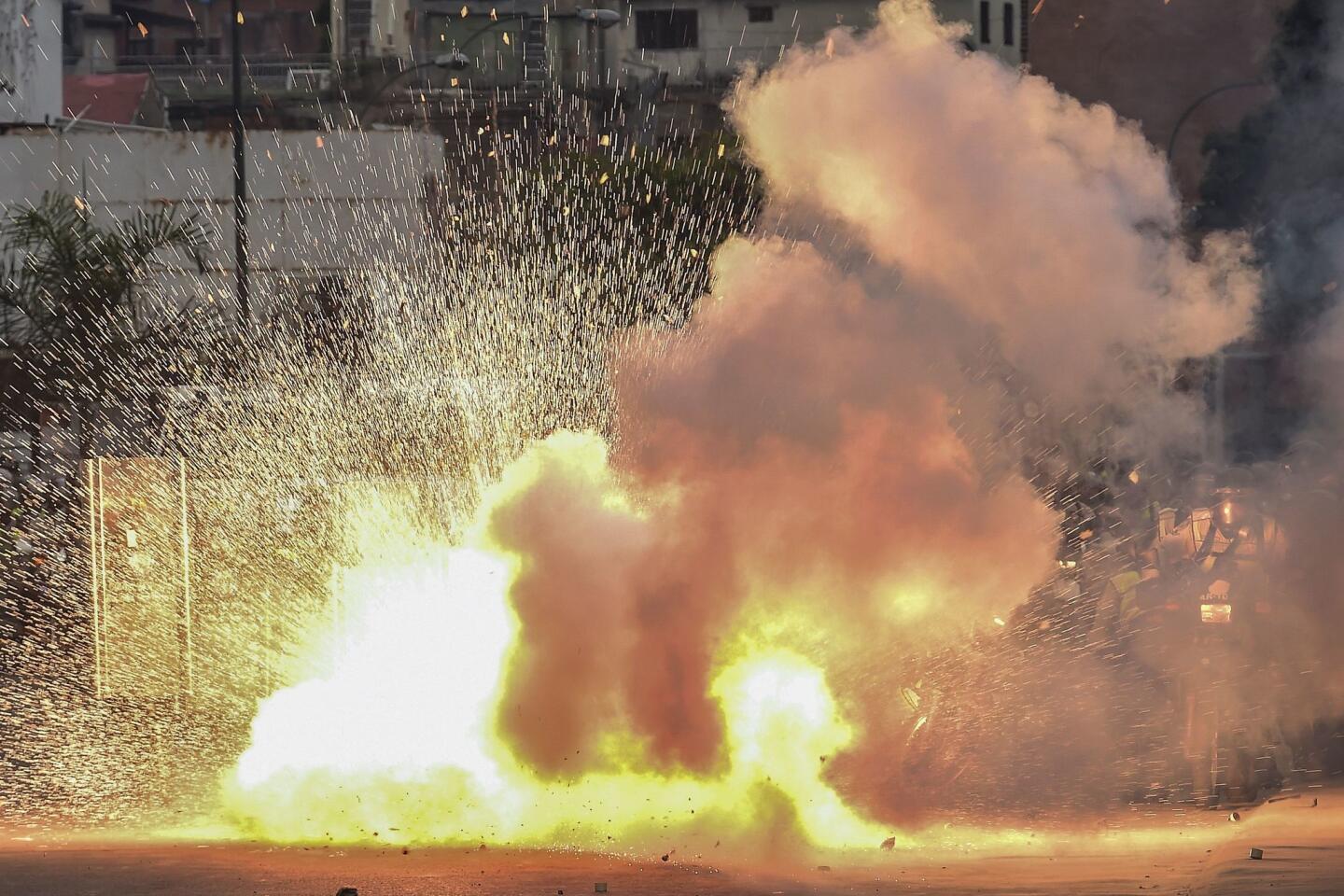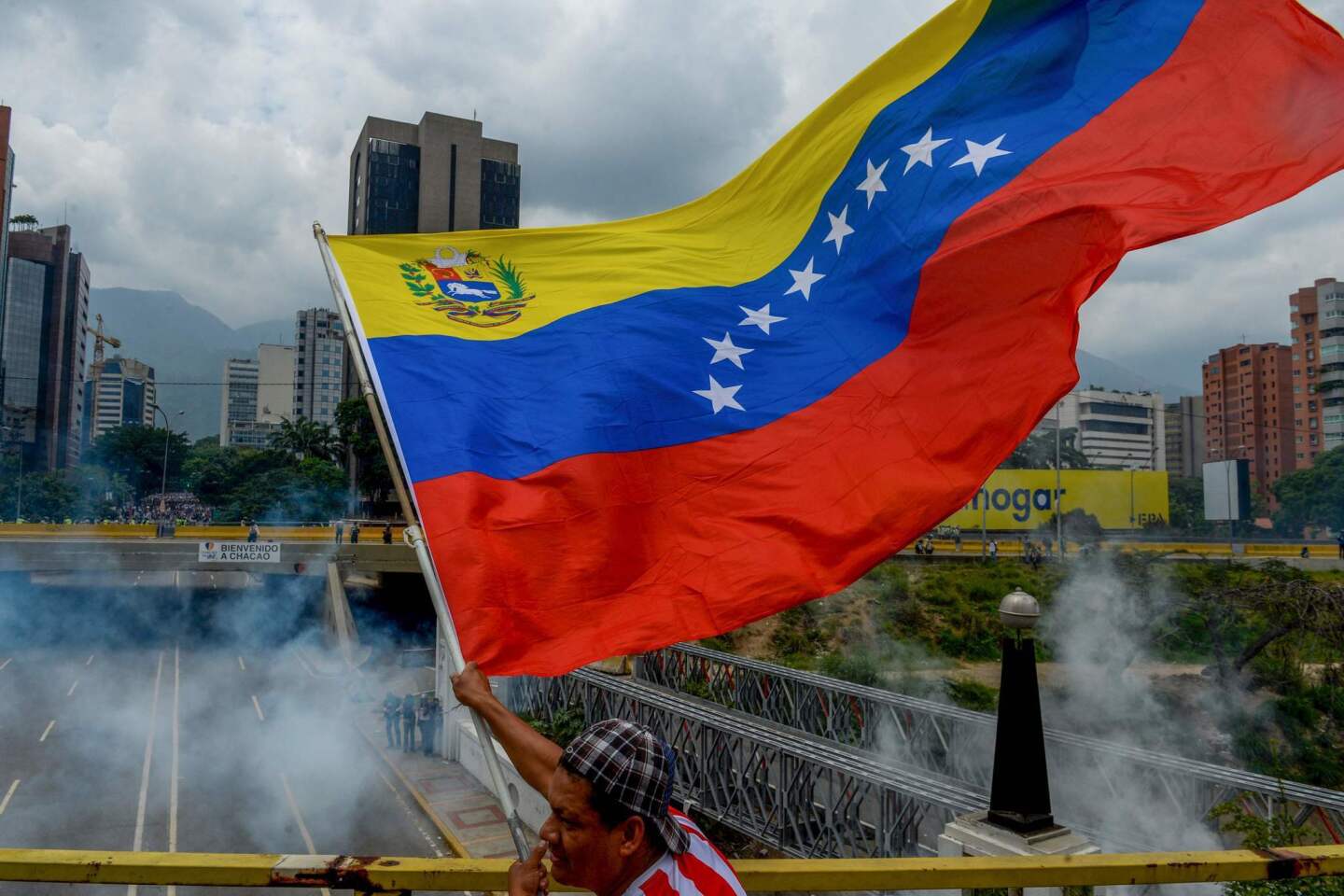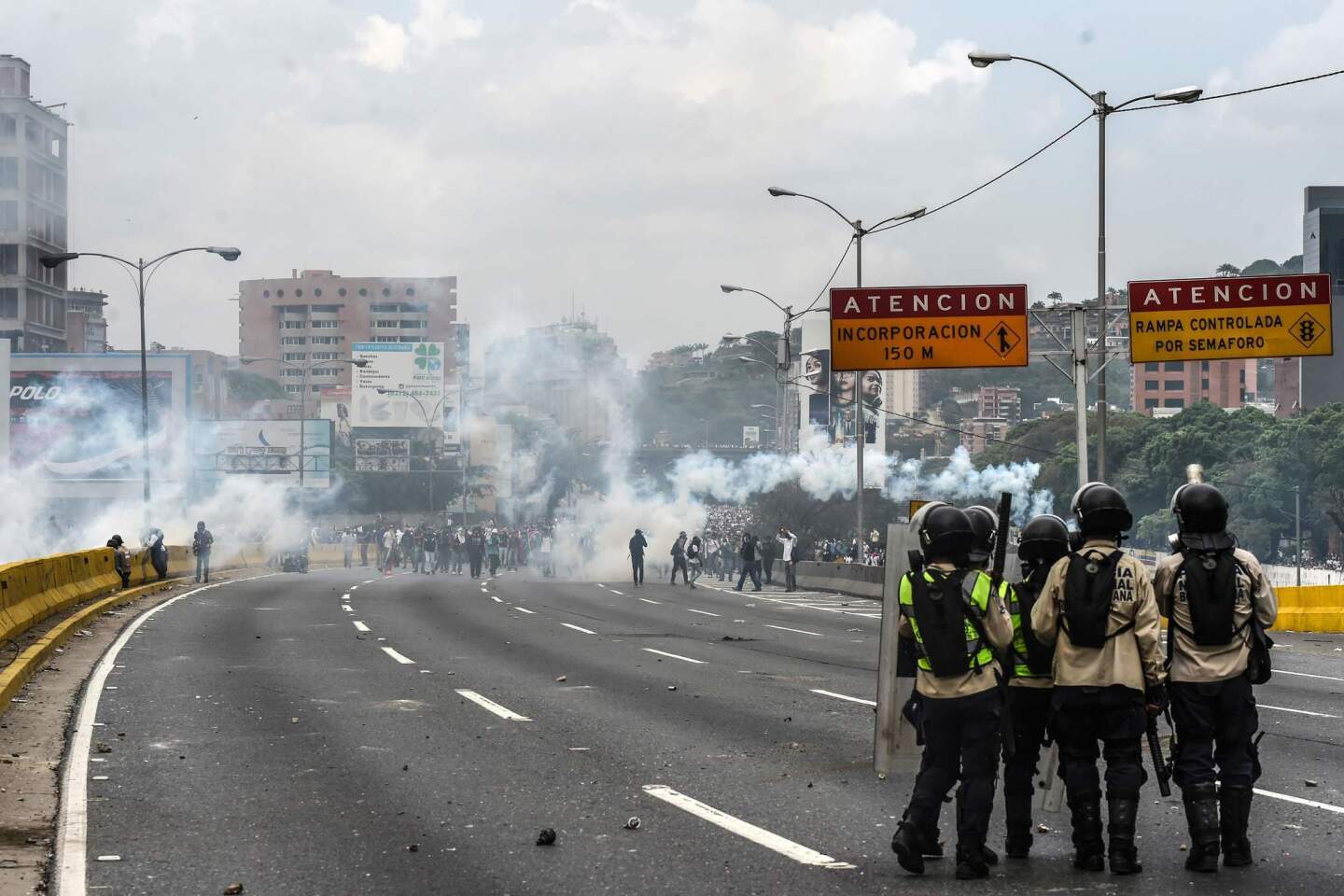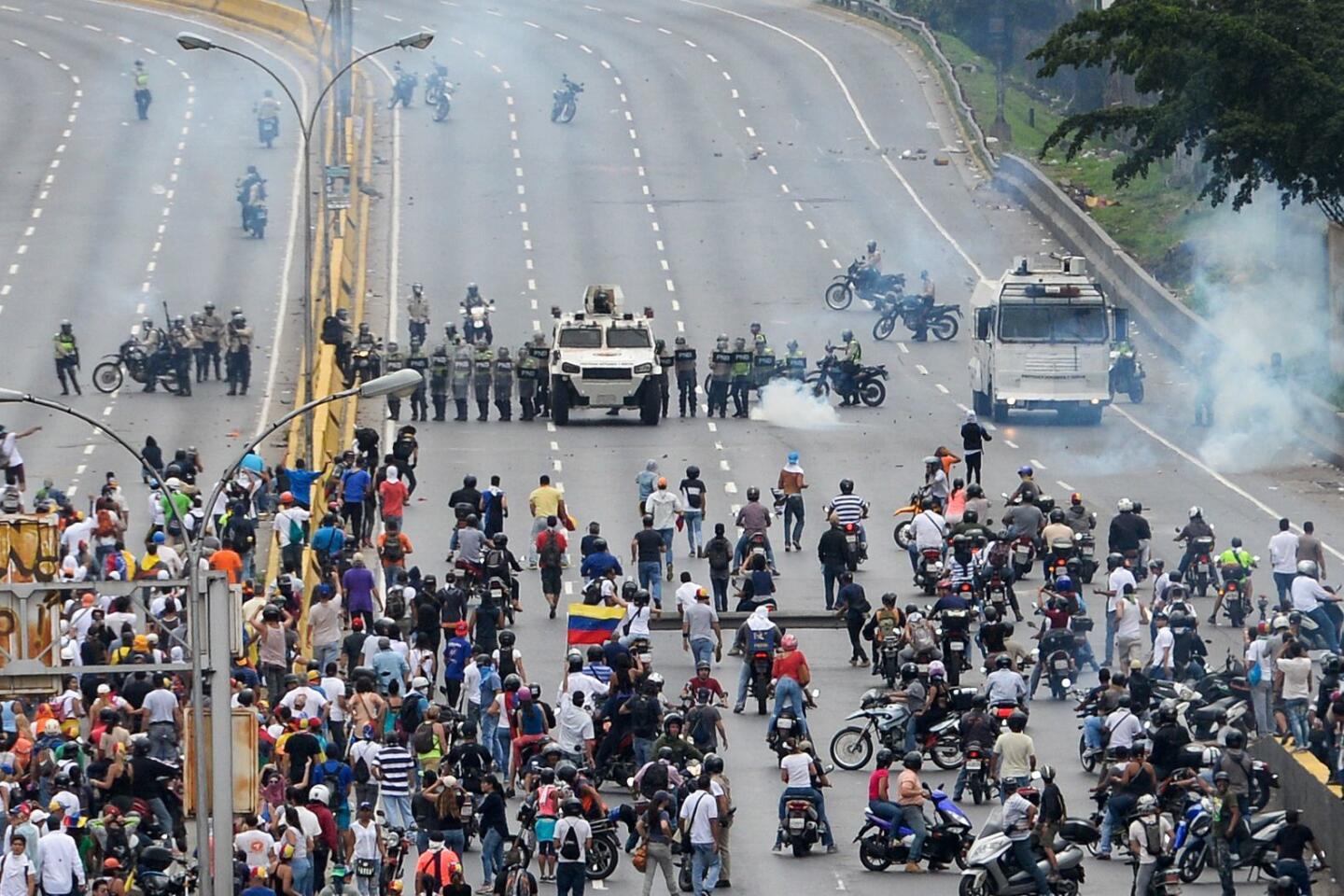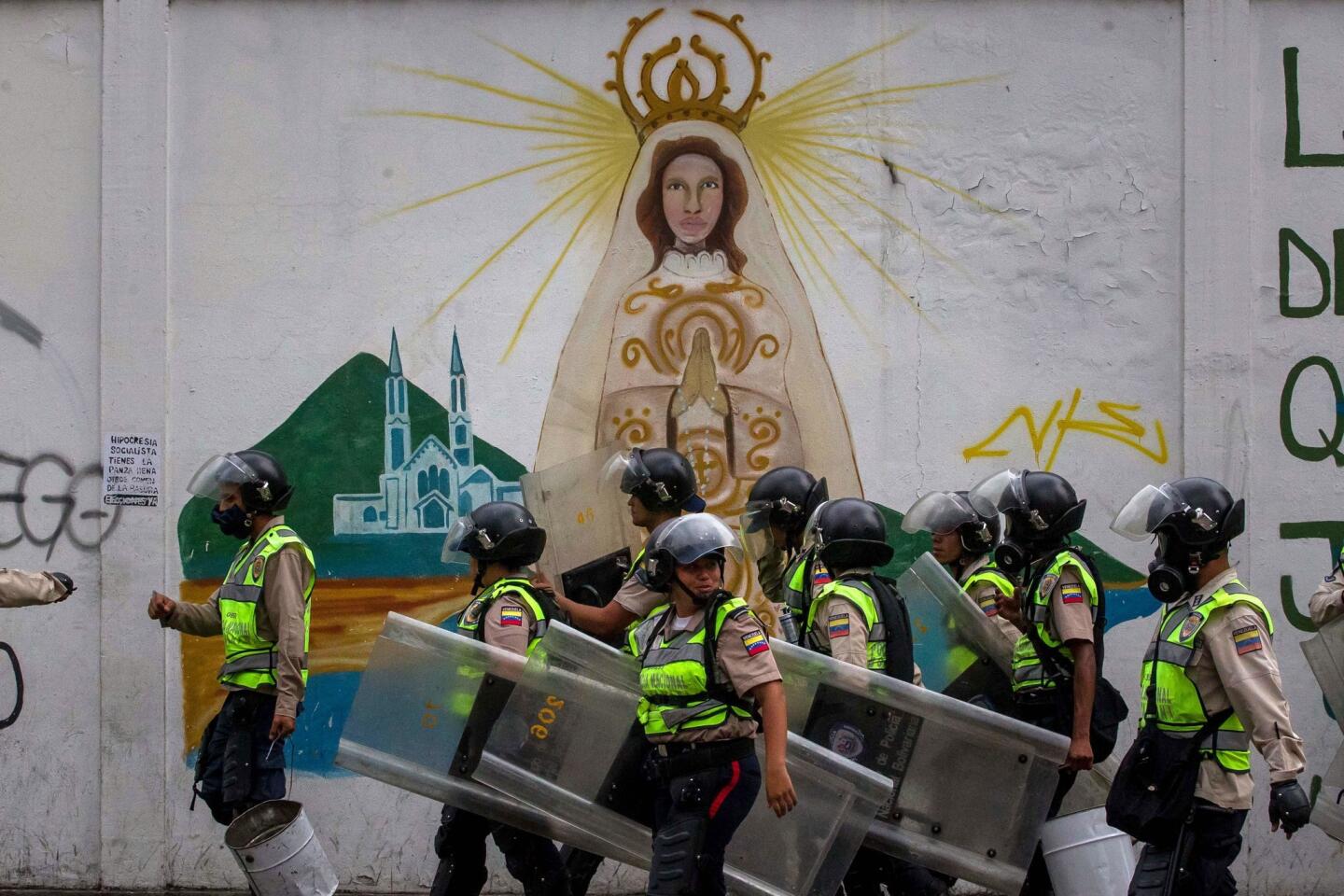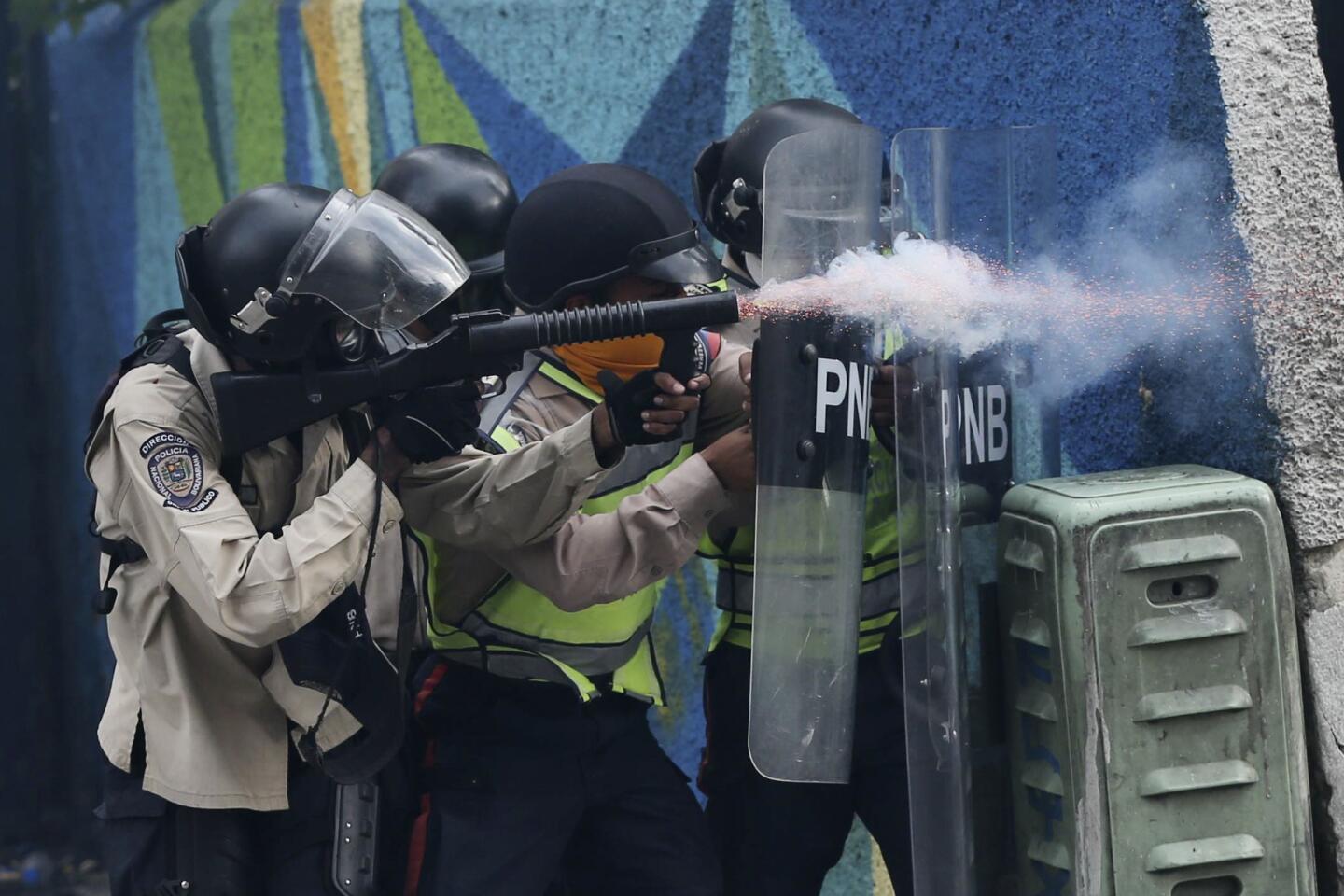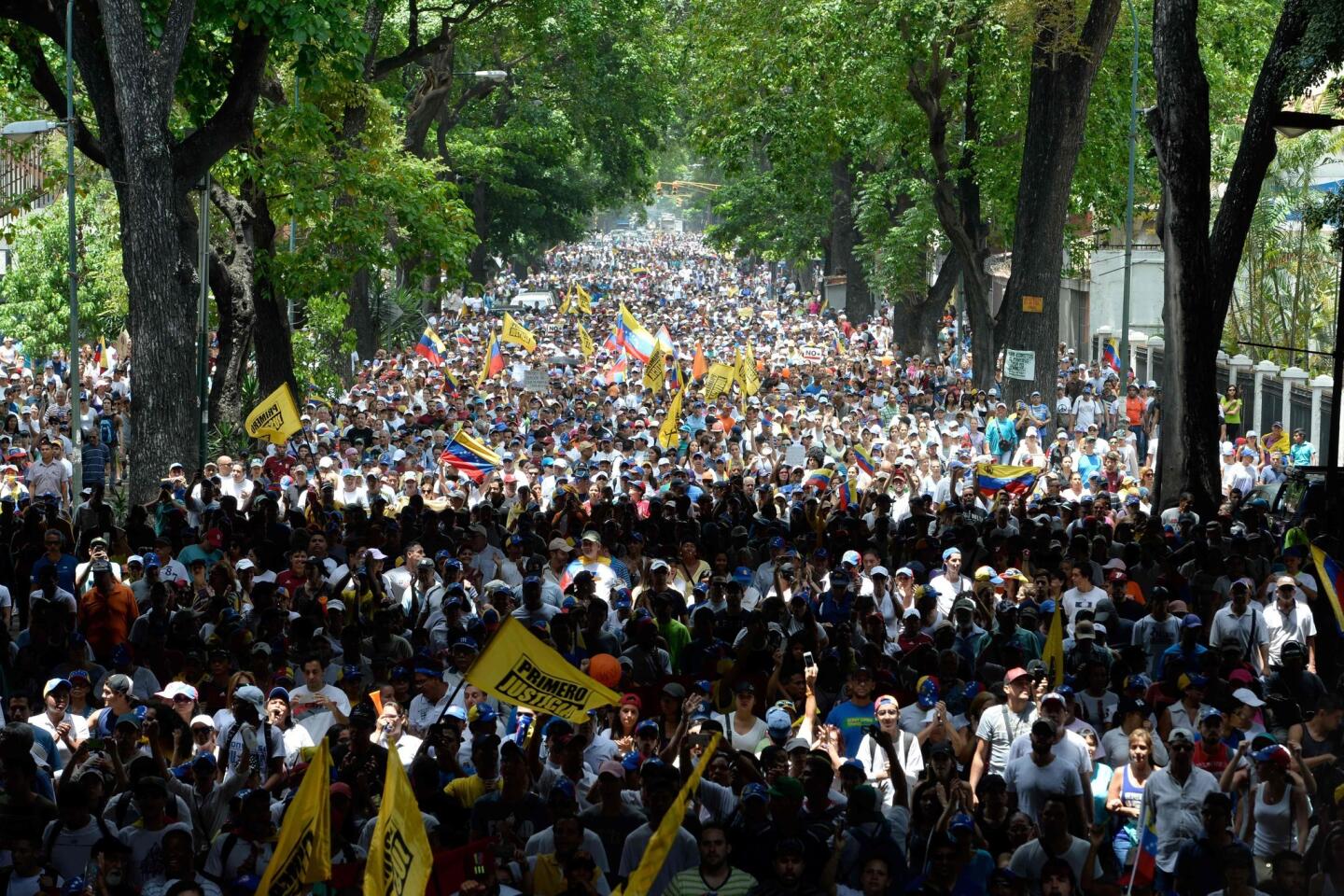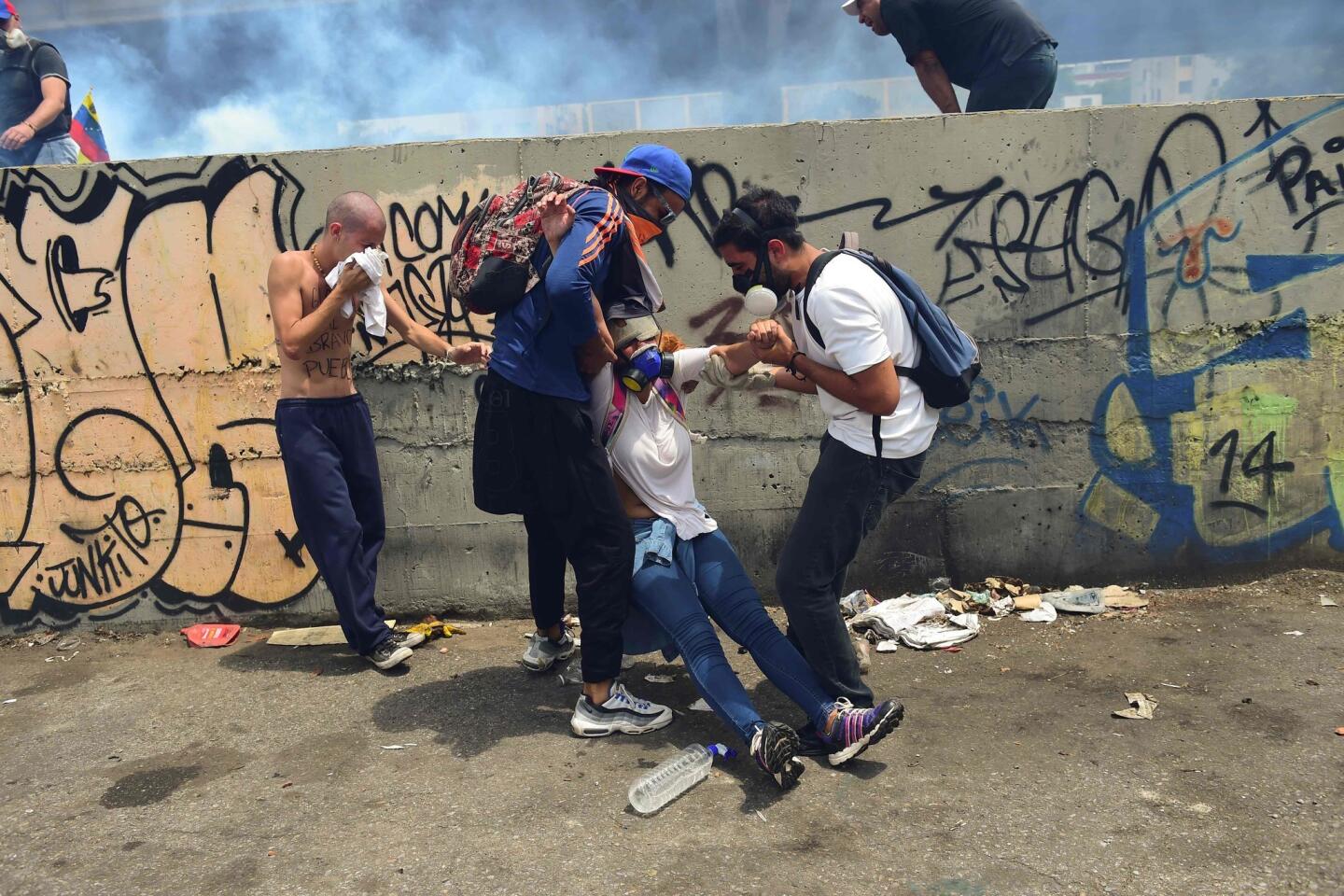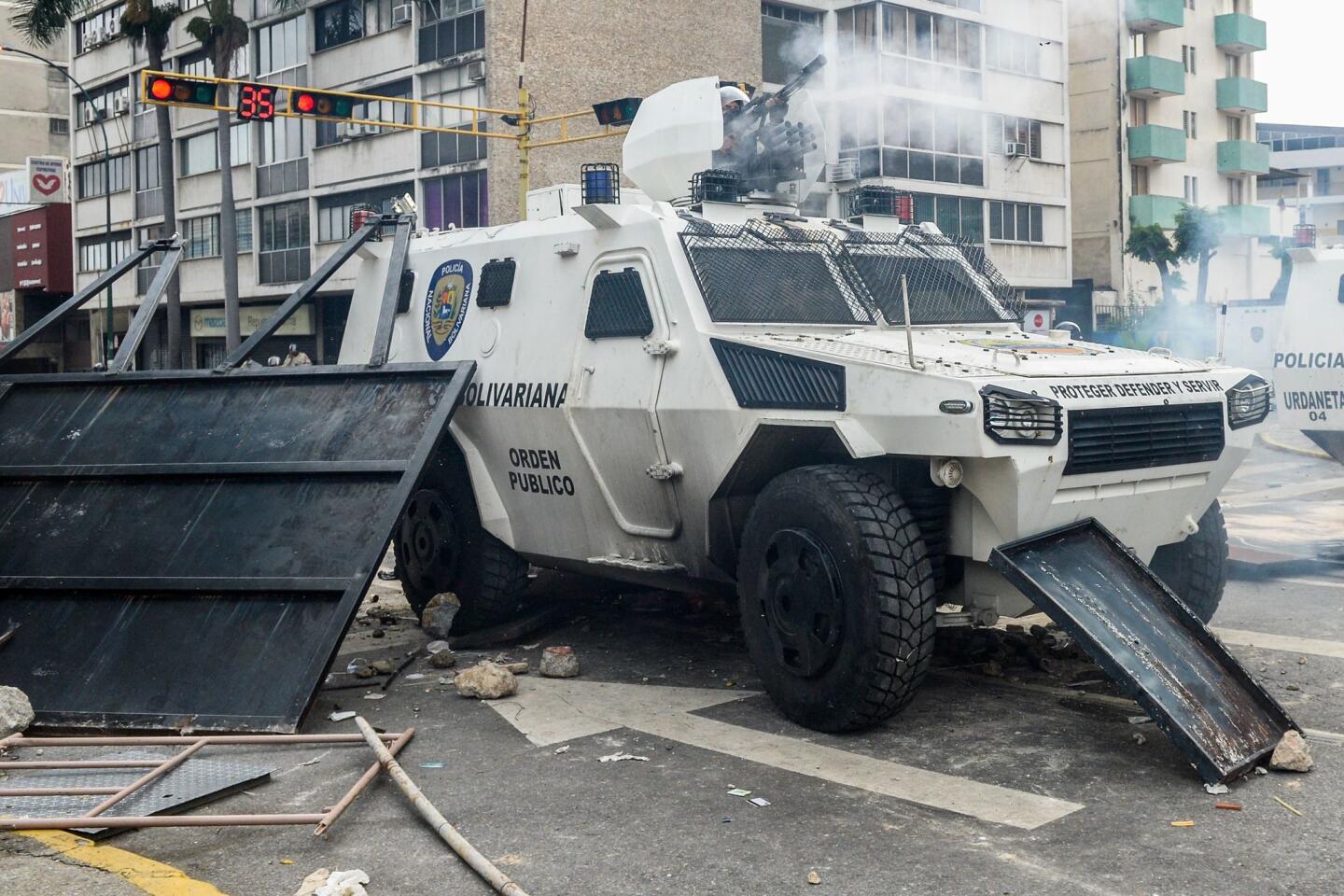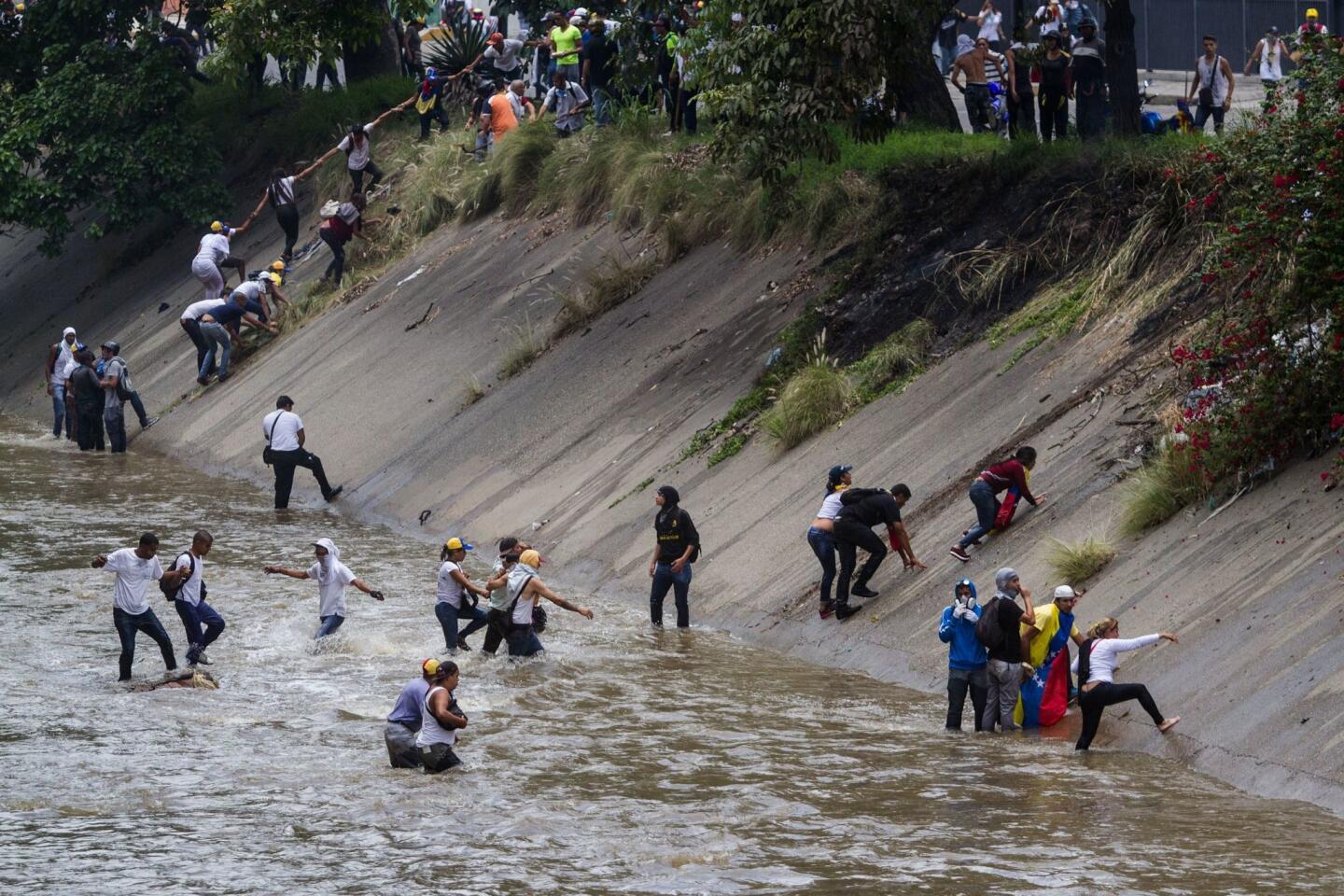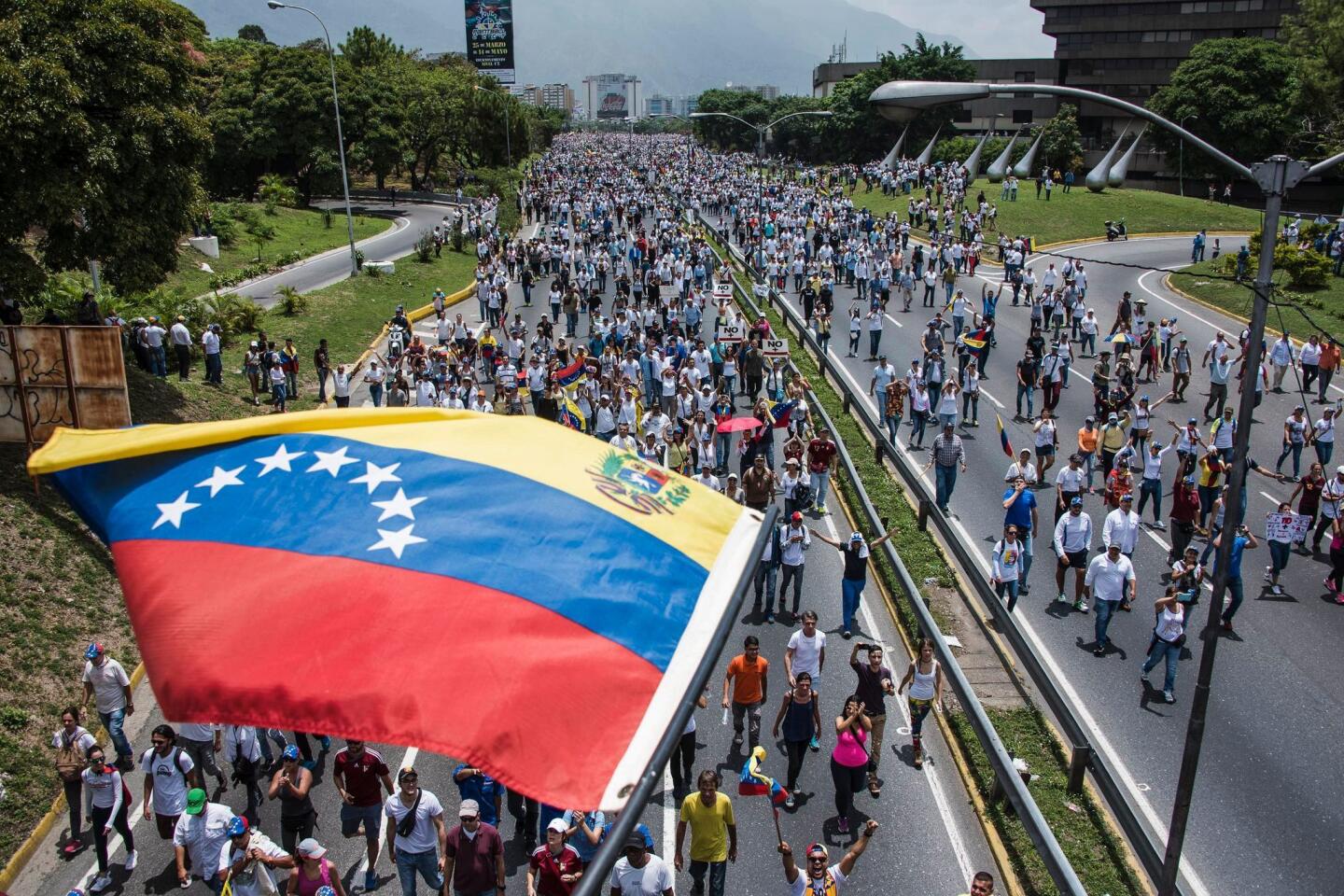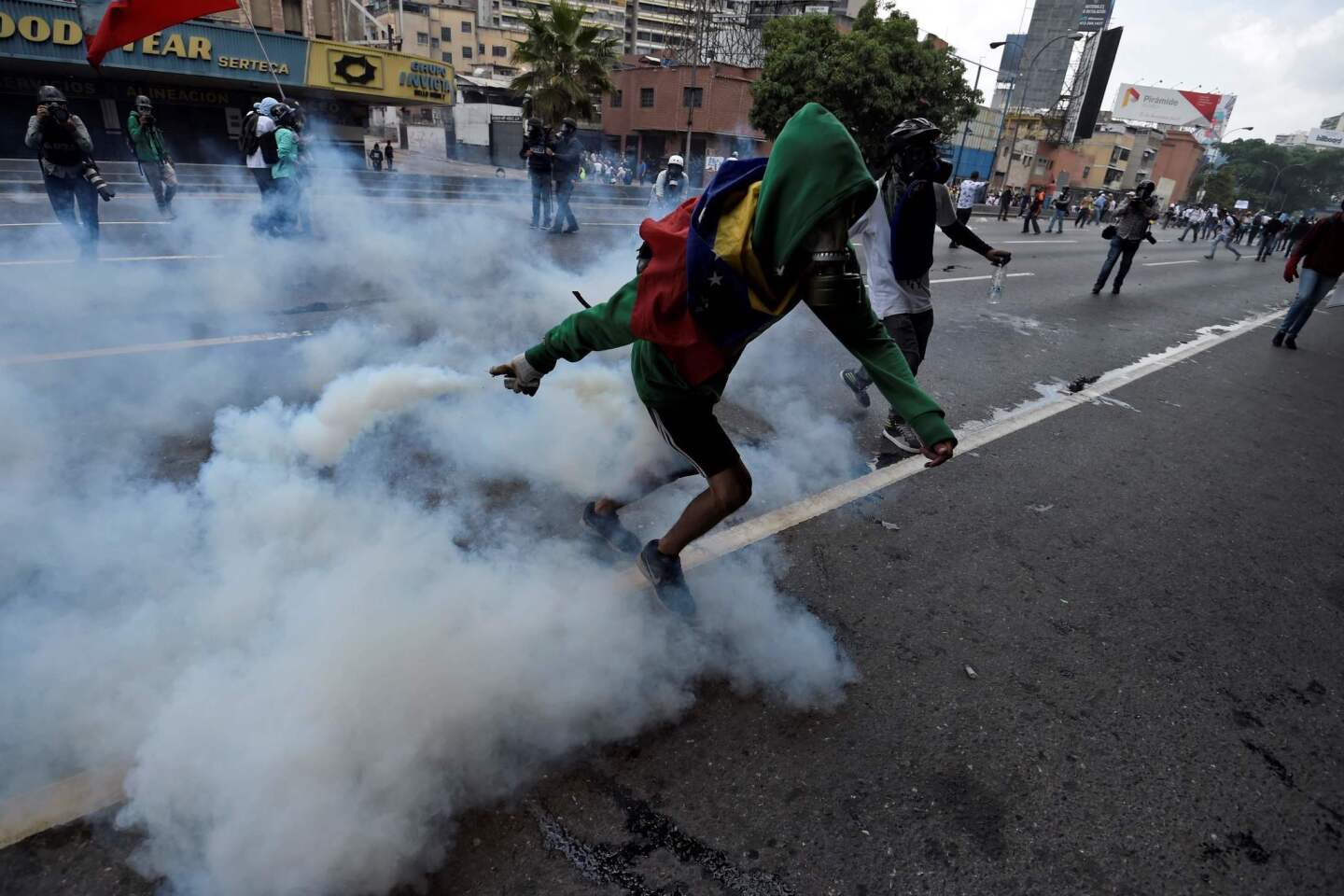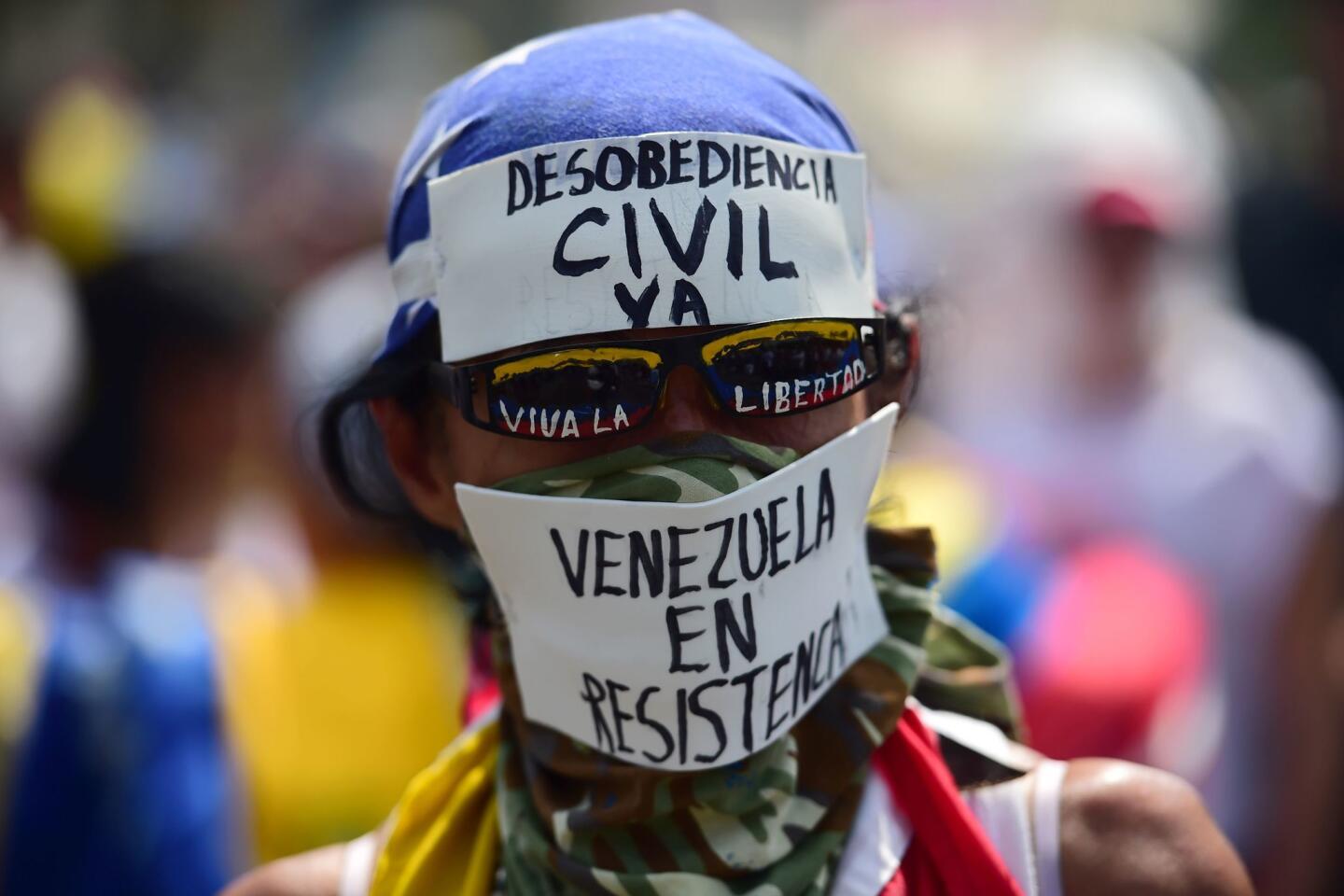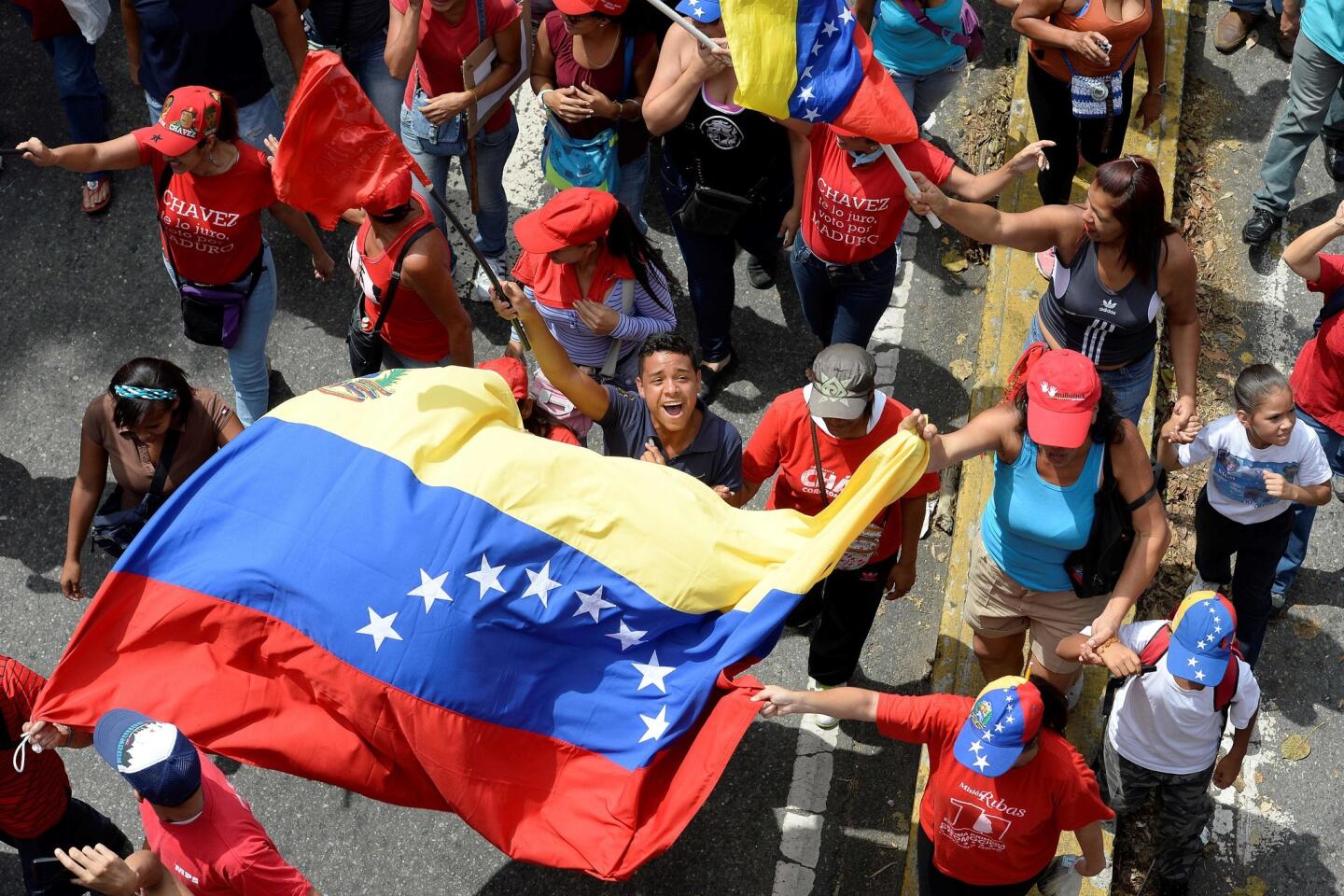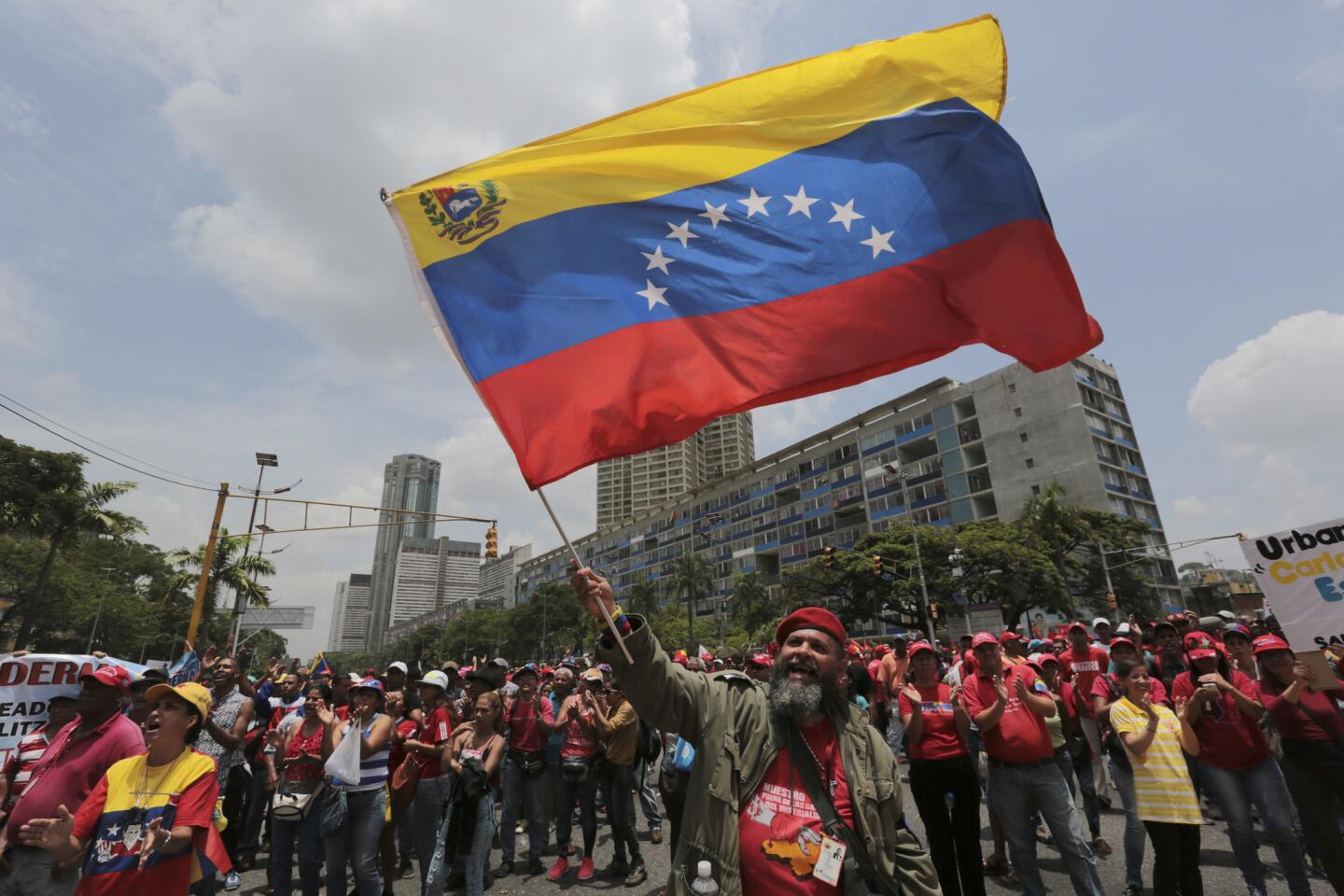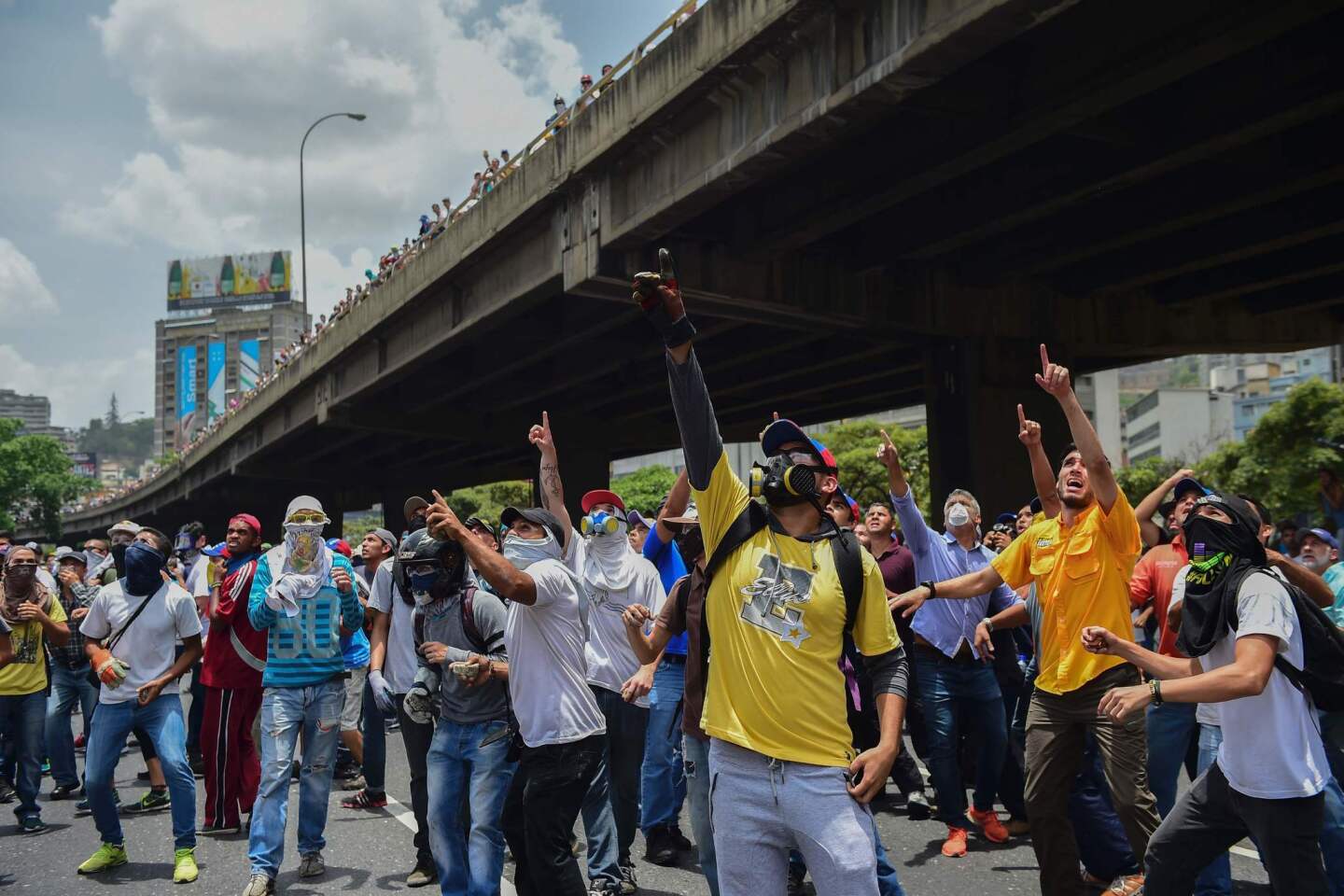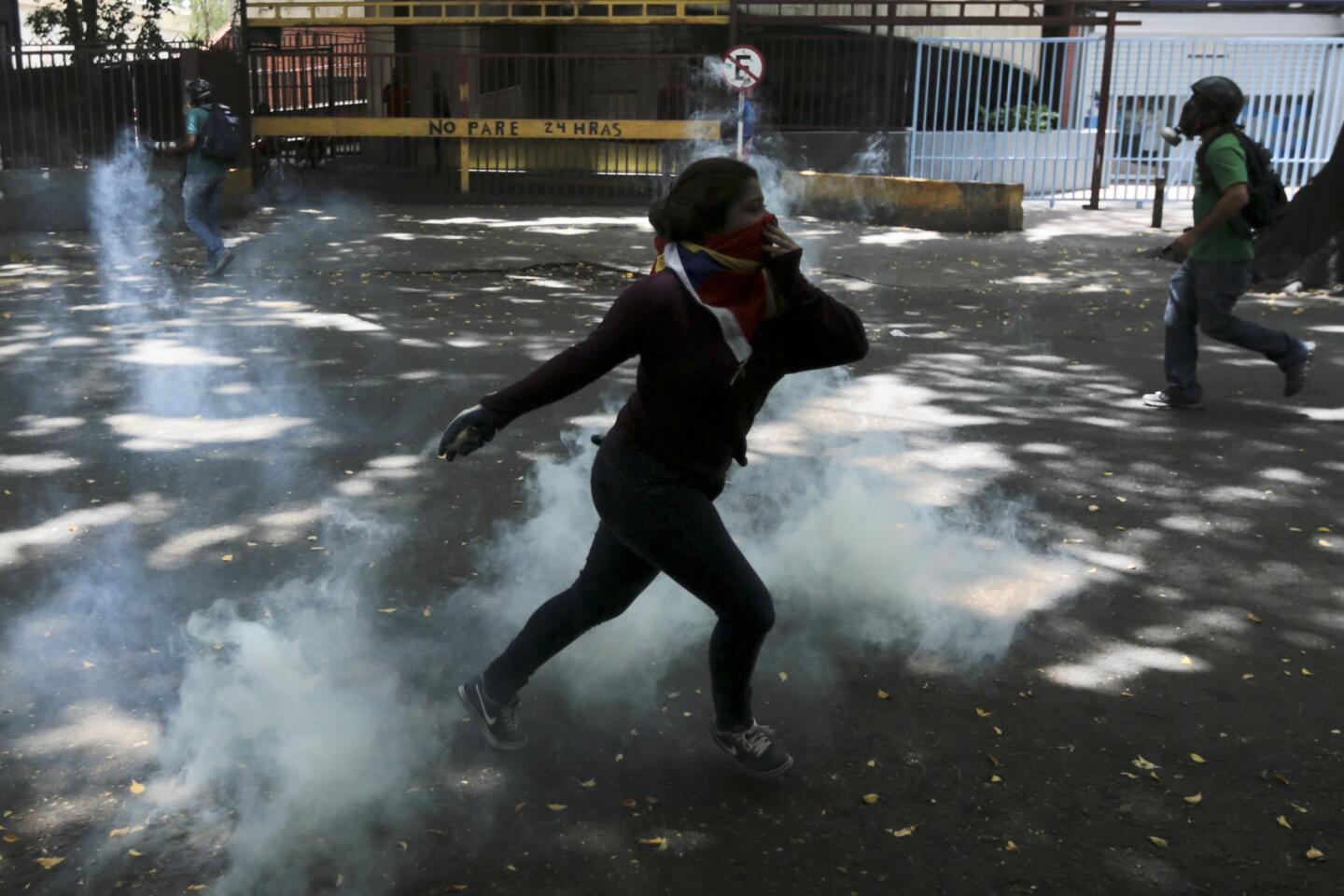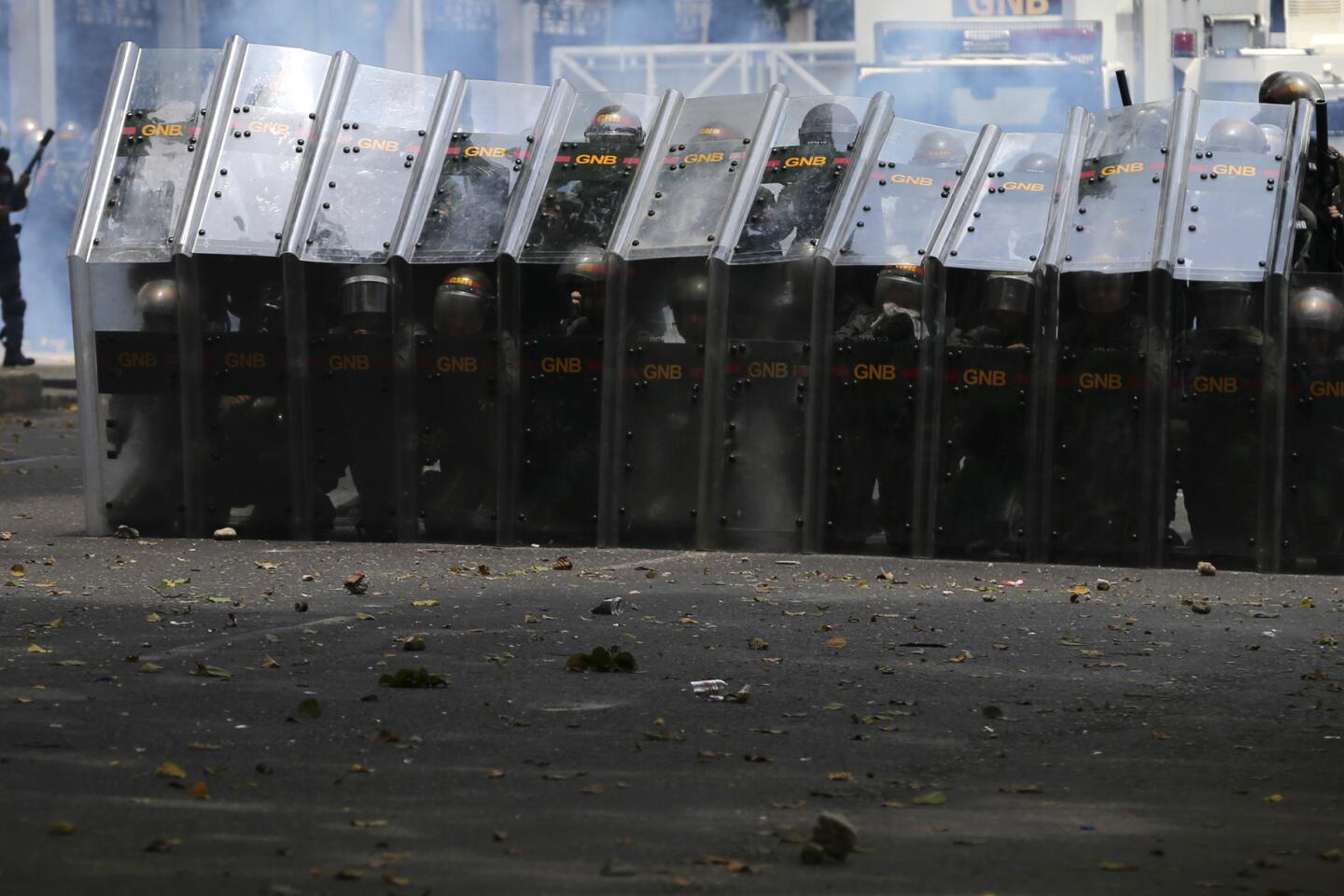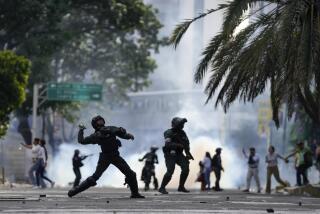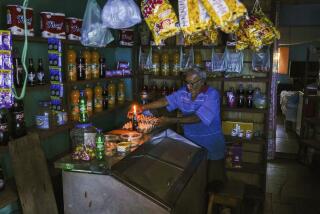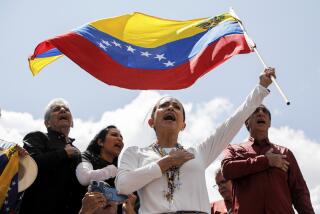Tens of thousands of Venezuelans march against President Nicolas Maduro
Reporting from Caracas, Venezuela — Tens of thousands of Venezuelans used a national holiday to demonstrate yet again against the government of embattled President Nicolas Maduro, and at least two people died as the government used heavily armed forces and tear gas to control the vast crowds.
Marching on a day marking the beginning of Venezuela’s independence movement from Spain in 1810, protesters dressed mainly in white clogged freeways and main thoroughfares across metropolitan Caracas, the capital. Many held placards reading “Maduro out,” “Down with dictatorship,” and “Liberty.”
For the record:
2:52 a.m. June 24, 2019An earlier version of this article gave Venezuelan Atty. Gen. Luisa Ortega Diaz’s first name as Lisa.
One of the fatalities was identified on social media as 19-year-old Carlos Jose Moreno Baron, who was killed apparently by a gunshot to the head fired by informal motorcycle-riding militias who support Maduro known as “colectivos.” The death reportedly happened during an attack on a group of protesters in the working-class San Bernardino barrio.
April 19 is normally a day in which businesses shut down, families in Caracas head to the beach and politicians leave flowers at a monument to the nation’s founder, Simon Bolivar.
But on this usually festive day, a photograph circulated on social media of a young man, his eyes closed, lying on his back in the street as blood pooled about his head. One tweet by Hasler Iglesias, a student protest leader, described him as “a victim of the murderous dictatorship.”
Later in the day, Paola Andreina Ramírez Gómez, 23, also was reported killed by a gunshot in the San Carlos Plaza area of San Cristobal, the capital of the western state of Tachira. It was not immediately clear who fired the shot.
In addition to Caracas, social media reported massive demonstrations in provincial cities, including Merida, Maracaibo, Valencia and San Cristobal.
Accustomed to authorities deploying tear gas to clear earlier demonstrations, many protesters showed up wearing gas masks. Some young men stripped off their shirts to cover their faces. Still others wore cycling helmets, or other kinds of headgear, for protection.
Social media provided a steady stream of images from the chaotic scenes, showing smoky tear canisters flying through the air, and protesters lobbing them back at police.
Iglesias, who has developed a national reputation as an anti-government protest organizer, described the scene on a highway devoid of cars but full of protesters. In a tweet he said authorities continued to engage protesters, “but we will not be moved. Fight with the RESISTENCE.”
Meanwhile Maduro spoke to a huge group of followers in downtown Caracas massed in the central government zone, and accused opposition marchers of attempting to use violence to overthrow his government. He also said “30 masked criminal terrorists” had been arrested on terrorism charges.
“The opposition has gone into the street violently to burn public transport. We have also arrested people with explosives and the man responsible for financing these violent activities,” Maduro said. “We are defeating this attempt at a coup d’etat.”
Venezuela has been swept by a new wave of protests since April 4 when the Supreme Court eliminated the immunity of members of congress and stripped the legislative body of its powers. The domestic and international outcry was so intense that those powers were quickly reinstated.
So far this month, clashes associated with the protests have resulted in seven deaths, more than 200 injured and 538 arrests.
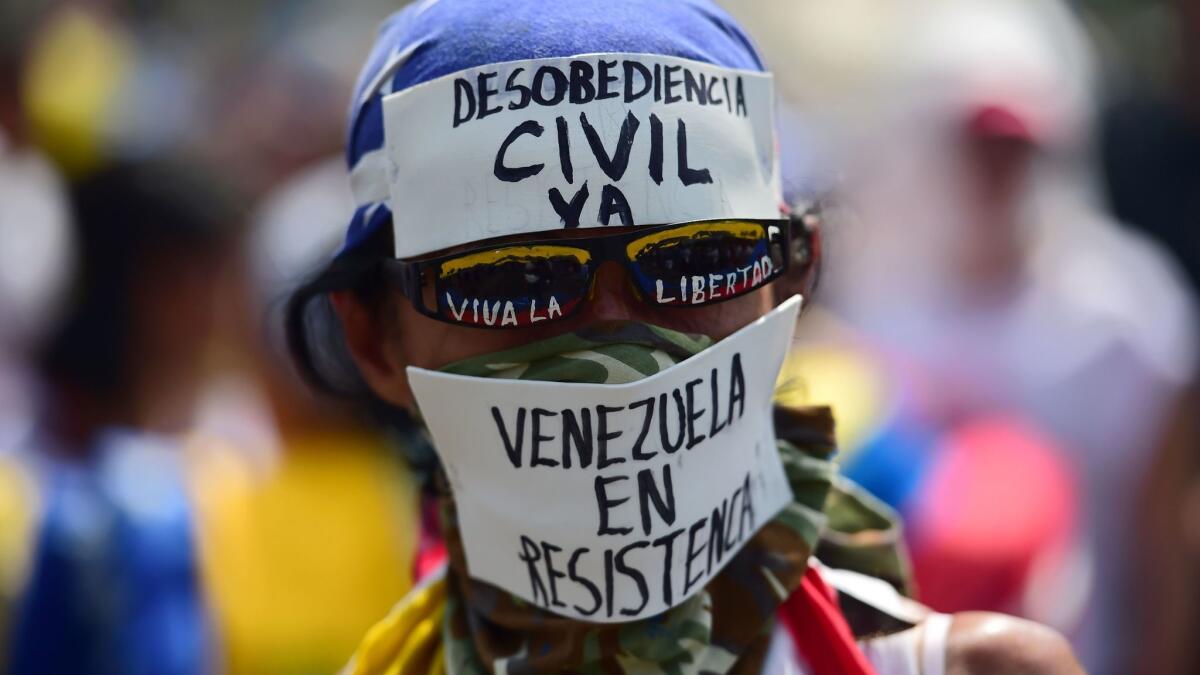
Venezuela has been devastated in recent months by food scarcities, breakdowns in public security and inflation that in February reached an annual rate of 455%.
In a move that opposition figures say was taken to limit participation in the Wednesday protests, Maduro ordered the closing of 20 of 48 stations in the capital city’s subway system. Many of Maduro’s supporters were bused to the city center.
In an unusual expression of support for protesters, Maduro’s attorney general, Luisa Ortega Diaz, issued a statement Wednesday urging armed forces to use restraint and to guarantee marchers the right to peaceful protest.
“The use of public forces and arms against demonstrators should only be used after all mechanisms of negotiation are exhausted,” Ortega Diaz said in the statement.
Wednesday’s protests came a day after Maduro signed orders to launch a new phase of an effort to counter what he called U.S.-backed plans to destabilize his government and overthrow him. He said the effort included distributing rifles to members of a citizen militia to “defend the revolution.”
Meanwhile, the United States and Organization of American States have repeatedly called on the Venezuelan government to respect the right of people to protest. On Tuesday, Luis Almagro, secretary general of the OAS, said “the recent actions of the regime to hand out weapons to civilians and urge them toward confrontation are a murderous repressive action that incites violence.”
On Wednesday, U.S. Secretary of State Rex Tillerson said, “We are concerned that the government of Maduro is violating its own constitution and is not allowing the opposition to have their voices heard, nor allowing them to organize in a way that expresses the views of the Venezuelan people.”
Tillerson added that “we’re watching it closely and working with others, particularly through the OAS, to communicate those concerns to them.”
Special correspondents Mogollon and Kraul reported from Caracas, Venezuela, and Bogota, Colombia, respectively.
Staff writer Tracy Wilkinson in Washington contributed to this report.
ALSO:
Meet the charismatic opposition leader the Venezuela government just can’t silence
‘I won’t let fear stop me’: A Venezuelan opposition leader fights on against an embattled president
UPDATES:
5:45 p.m.: This article was updated to report comments by Secretary of State Rex Tillerson and Luis Almagro, secretary general of the Organization of American States.
2:35 p.m.: This article was updated to report the deaths of two protesters.
This article was originally published at 10:45 a.m.
More to Read
Sign up for Essential California
The most important California stories and recommendations in your inbox every morning.
You may occasionally receive promotional content from the Los Angeles Times.
